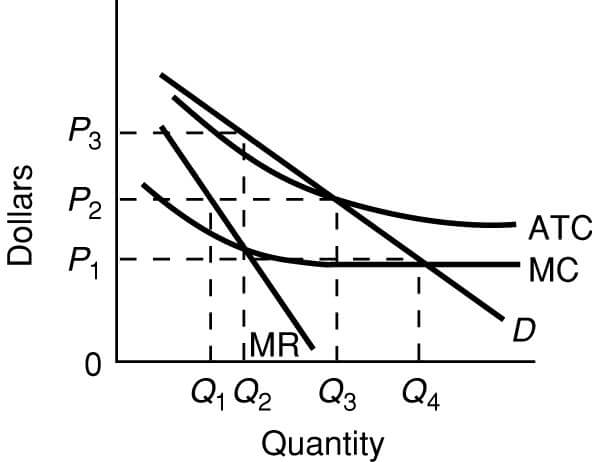Principles of Economics II ECON 203 PART I
Homework #3
INSTRUCTIONS (PLEASE READ): This homework is OPEN BOOK. Record your answers for all questions in the very back of the file in the space provided. Answers must be typed and well-written in understandable English. Feel free to use graphs to explain your answer, if appropriate. Enter your answers into the assignments portion of WebTycho in the appropriate section (Homework 3). There have been some issues with copying and pasting in WebTycho, please attach this as a file to your assignment. Please answer all short answer questions in 100 words or less. Excessive verbosity will not improve your score.
In this homework, multiple choice and short answer questions are inter-twined. For all multiple choice questions, following your answer choice, please provide an explanation for how you came up with the answer (or why you eliminated the other alternatives.) The explanation and the choice are worth equal amounts.
1. Explain in what aspects, a monopolistically competitive industry combines elements of both competition and monopoly.
Like a monopoly:
- The monopolistic competitive firm has some monopoly power so the firm faces a downward sloping demand curve
- Marginal revenue is below price
- At profit maximizing output, marginal cost will be less than price
Like a perfect competition:
- Like a perfect competitor, zero economic profits exist in the long run
2. Explain why cartels are difficult to maintain in the long run
Cartels are difficult to maintain in long run, because each firm in the cartel looks to increase its profit by lowering the price. This may result in a price war. Also firms are tempted to increase production to increase profit.
SAMPLE ANSWER:
Cartel is a formal agreement among the competing firms producing similar product and sell the product at a predetermined price. The aim of cartel is to increase individual member profit by reducing competition. Cartels are difficult to maintain in long run, because each firm in the cartel looks to increase its profit by lowering the price. This may result in a price war. Also firms are tempted to increase production to increase profit.
Since cartels are allowed with permission of government in case govt open its doors to foreign players the price war will lead to dismantling of cartelization.
3. True or False (and explain): When firms collude and agree to act as a monopoly and set prices they are called a cartel, they are likely to make higher profits, and they have incentives to cheat on the agreement.
A) True.
B) False
True. Firms are tempted to increase production to increase profit. Hence, there is a built-in incentive for each cartel member to cheat. Of course, if all members cheated, the cartel would cease to earn monopoly profits, and there would no longer be any incentive for firms to remain in the cartel.
4. Suppose one candidate for election to public office proposes a $16 billion budget and another candidate proposes a $20 billion budget, when the average voter preference is for a $19 billion budget and the median voter preference is $18 billion. Assuming candidates desire the maximum number of votes, the candidates are expected to move toward a budget position of:
A) $18 billion.
B) the smaller budget of $16 billion.
C) $19 billion.
D) the larger budget: $20 billion.

5. Refer to the above diagram for a natural monopolist. What price would the local regulatory set in commission order to ensure only a normal rate of return for the firm?
A) P1.
B) P2.
C) P3.
D) 0.
P2 is the price for normal rate of return. Here demand is equal to Average Total Cost.
Consider the following Sequential Game Matrix for the questions below:
| Step 1 | Step 2 | Monthly Profit: | ||
| Fly-by-Night Airlines (FBNA) | Set High Priced Fares | Daylight Airlines (DAL) | Set High Priced Fares Set Low Priced Fares | FBNA: $21,000 DAL: $22,000 FBNA: $15,000 DAL: $26,000 |
| Set Low Priced Fares | Daylight Airlines (DAL) | Set High Priced Fares Set Low Priced Fares | FBNA: $25,000 DAL: $14,000 FBNA: $17,000 DAL: $18,000 |
To access the complete answer towards the above assignment email: [email protected] or chat with us live.


